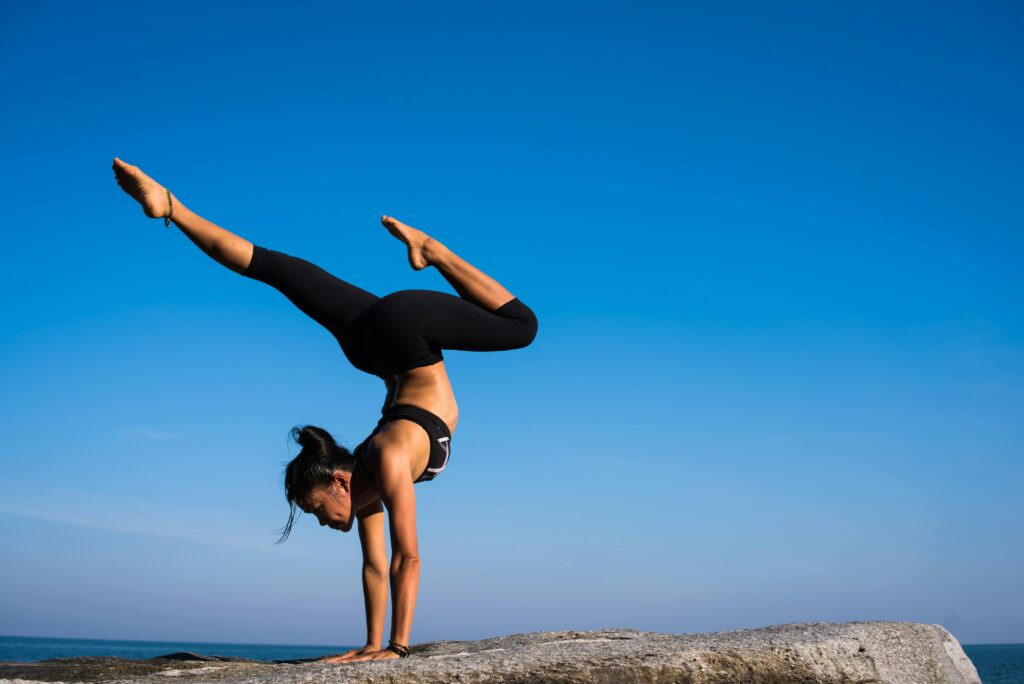Discover the transformative power of yoga and meditation for achieving holistic wellness. Learn how to harmonize body and mind.
Introduction
In today’s fast-paced world, more and more people are searching for ways to feel better, both physically and mentally. One approach that has stood the test of time for thousands of years is yoga and meditation. These practices aren’t just trendy; they offer a holistic solution to achieving a balanced and fulfilling life. But how exactly do yoga and meditation contribute to complete wellness? How can these ancient techniques be incorporated into our modern lives to improve both body and mind?
If you’ve ever wondered how to achieve a healthier, happier life, yoga and meditation might just be the answer. Let’s dive into how these practices can lead you to complete wellness, step by step.
What is Complete Wellness?
Complete wellness is more than just physical health; it is a state where your body, mind, and spirit are in harmony. Think of it as a well-tuned instrument: when every part works together, the music is beautiful. Wellness encompasses physical fitness, mental clarity, emotional balance, and spiritual peace. Achieving this level of balance isn’t about perfection but finding practices that help you feel your best in all areas of your life.
How Yoga and Meditation Fit into Wellness
Yoga and meditation are like two sides of the same coin when it comes to wellness. While yoga focuses on physical movement, flexibility, and strength, meditation helps calm the mind, increase awareness, and foster emotional resilience. Together, they provide a comprehensive approach to achieving complete wellness, addressing both body and mind.
Physical Benefits of Yoga
Yoga is often associated with improved flexibility, but it is so much more than that. From strengthening muscles to enhancing cardiovascular health, yoga provides a full-body workout. Here are some of the key physical benefits:
- Increased Flexibility: Yoga stretches and lengthens muscles, improving range of motion.
- Enhanced Strength: Many yoga poses engage your core, arms, and legs, building functional strength.
- Better Posture: As yoga strengthens your core and aligns your body, you’ll naturally adopt better posture.
- Improved Circulation: Yoga poses encourage blood flow and improve cardiovascular health.
- Boosted Immunity: Regular yoga practice stimulates the lymphatic system, helping to flush out toxins and support immune function.
Mental and Emotional Benefits of Meditation
Meditation goes beyond relaxation; it’s a tool for cultivating mental clarity and emotional balance. By focusing on the present moment, meditation allows you to observe your thoughts without judgment, which can lead to:
- Reduced Anxiety: Regular meditation helps lower cortisol levels, reducing stress and anxiety.
- Improved Focus: Meditation trains the brain to concentrate on the present moment, improving focus and cognitive function.
- Emotional Resilience: By promoting mindfulness, meditation helps you better cope with difficult emotions.
- Increased Self-Awareness: Meditation encourages introspection, helping you understand yourself on a deeper level.
- Better Sleep: Meditation calms the nervous system, which can improve sleep quality.
Yoga and Meditation: A Perfect Combo
Yoga and meditation complement each other beautifully. While yoga prepares the body through movement, meditation settles the mind. Together, they create a balance of physical strength and mental clarity. It’s like yin and yang: yoga energizes, while meditation relaxes. Practicing them together ensures a holistic approach to wellness.
Yoga for Flexibility and Strength

Yoga is often likened to a “moving meditation” because of the mindful nature of the practice. By focusing on your breath while moving through poses, you not only stretch and strengthen your body, but you also cultivate mental awareness. Over time, you’ll notice increased flexibility and a stronger body, which translates to better balance, posture, and overall physical health.
Key Benefits of Yoga for Strength:
- Develops lean muscle mass
- Improves core stability
- Enhances overall balance
Meditation for Mental Clarity

In the same way that yoga strengthens the body, meditation strengthens the mind. By practicing stillness and focusing on your breath, you can improve concentration, quiet mental chatter, and gain greater insight into your thoughts and emotions. Meditation is particularly effective for reducing stress and anxiety, as it helps you stay grounded in the present moment.
How to Start Your Yoga Practice
Starting yoga doesn’t have to be overwhelming. You can begin with just a few poses a day. Here’s how to get started:
- Find a Quiet Space: All you need is a yoga mat and a peaceful environment.
- Start with Basic Poses: Try simple poses like Child’s Pose, Downward Dog, and Mountain Pose.
- Focus on Your Breath: The key to yoga is synchronizing your breath with your movements.
- Set Small Goals: Aim to practice 10-15 minutes daily, gradually increasing your time and intensity.
Incorporating Meditation into Daily Life
Meditation can be done anywhere, at any time. Here’s how to make it a part of your daily routine:
- Set Aside Time: Start with just 5 minutes a day.
- Choose a Comfortable Position: You can sit in a chair, on the floor, or even lie down.
- Focus on Your Breath: Pay attention to the rhythm of your breath, allowing your thoughts to come and go without judgment.
- Use a Guided Meditation: If you’re new, guided meditations can help keep you focused.
Different Types of Yoga and Meditation
There are many styles of yoga and meditation, each offering unique benefits. Here are a few:
- Hatha Yoga: A slower-paced practice, focusing on basic poses and breathing techniques.
- Vinyasa Yoga: A dynamic, flow-based practice that synchronizes movement with breath.
- Yin Yoga: A meditative practice that involves holding poses for longer periods to stretch connective tissues.
- Mindfulness Meditation: Focuses on being present and aware of your thoughts and feelings without judgment.
- Loving-Kindness Meditation: Cultivates compassion and love towards oneself and others.
The Science Behind Yoga and Meditation
Research shows that both yoga and meditation have numerous health benefits. Studies reveal that yoga can improve heart health, reduce inflammation, and even alleviate chronic pain (1). Similarly, meditation has been shown to reduce stress, improve memory, and enhance emotional well-being (2). These findings emphasize that these practices are not only beneficial but essential for maintaining overall wellness.
Yoga and Meditation for Stress Relief
One of the most significant benefits of yoga and meditation is their ability to reduce stress. By focusing on breathing and mindfulness, both practices activate the parasympathetic nervous system, which helps lower stress hormones like cortisol. Regular practice can help you feel calmer, more cantered, and better equipped to handle life’s challenges.
Enhancing Sleep with Yoga and Meditation
Struggling with sleep? Yoga and meditation can help. Gentle yoga stretches before bed can relax the body, while meditation calms the mind, preparing you for restful sleep. Research suggests that these practices can improve sleep quality and reduce insomnia, making them an effective natural remedy for sleep problems (3,4).
Consistency: The Key to Complete Wellness
Like anything worth achieving, consistency is key. To experience the full benefits of yoga and meditation, it’s important to make them a regular part of your life. Start small, set realistic goals, and remember that wellness is a journey, not a destination.
Conclusion: Embrace the Journey to Wellness
Yoga and meditation are powerful tools for achieving complete wellness. Whether you’re looking to improve your physical health, calm your mind, or find emotional balance, these ancient practices offer a holistic approach to living your best life. So why not start today? Embrace the journey to wellness and discover the transformative power of yoga and meditation.
Frequently Asked Questions (FAQs)
Q1. How often should I practice yoga and meditation for complete wellness?
A1. Consistency is more important than frequency. Aim to practice yoga and meditation for at least 15-30 minutes daily to reap the full benefits.
Q2. Can beginners benefit from yoga and meditation?
A2. Absolutely! Both yoga and meditation can be adapted for all levels, making them accessible and beneficial even for beginners.
Q3. What are the best times to practice yoga and meditation?
A3. Many people find mornings and evenings to be the best times for yoga and meditation, but you can practice them whenever it fits into your schedule.
Q4. Do I need any special equipment for yoga and meditation?
A4. No special equipment is needed. A yoga mat is helpful, but you can meditate anywhere, and basic yoga poses can be done without props.
Q5. How long does it take to see results from yoga and meditation?
A5. Results vary from person to person, but with consistent practice, many people begin to notice physical and mental improvements within a few weeks.

